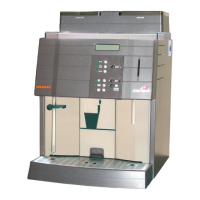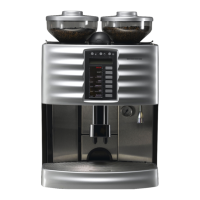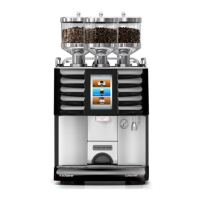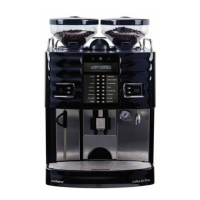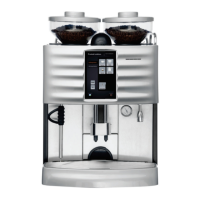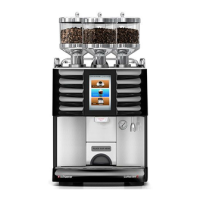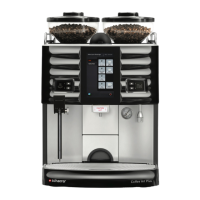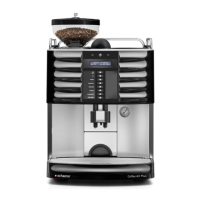Cleaning
BASO-2 - 01.05 - V07 Page 5-27
5.5 Defrosting the fridge
Note:
The fridge has to be defrosted when the layer of ice is more than 3 mm thick. This is
an important prerequisite, if the machine is to operate smoothly.
To defrost completely, turn the thermostat control anti-clockwise until it stops. The
fridge is now turned off.
Attention!
Never remove the ice with pointed and sharp objects or with objects made of metal!
It can damage the cooling plates!
After defrosting the fridge, put it back in operation by setting the thermostat at the right
temperature (3-5 °C).
+ Chapter 7.1.5.2 “Regulating the fridge’s temperature“, page 7-7.
5.6 Fridge maintenance
Electric shock!
If the fridge’s power supply is not connected to the coffee machine, pull the mains plug
out of the socket!
There is danger of injury from electric shock!
Outside cleaning:
Clean the fridge outside with a dish detergent. Wipe the cleaned surfaces with a moist,
clean cloth without detergent. Then dry the surfaces with a clean, dry cloth. Do not use
abrasives.
Inside cleaning:
Remove the milk container from the fridge and clean it. Clean the fridge with soda or
vinegar in lukewarm water. Wipe the cleaned surfaces with a moist, clean cloth with-
out detergent. Then dry the surfaces with a clean, dry cloth. Never use abrasives,
cleaning agents or soap.
General:
To avoid a build-up of mould and unpleasant odors when the fridge is idle for an ex-
tended period of time please prepare as follows:
Empty the fridge completely, clean the inside and the sealing on the door and leave
the door slightly open.
Chapter 4.4.9, “Termination operation”, page 4-10
The picture shows the fridge with the
door open.
Note:
Please note that the fridge should be turned on at least one hour before use, so that
the cooling level (3 - 5 °C) is ready for operation.
Picture. C
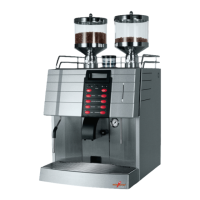
